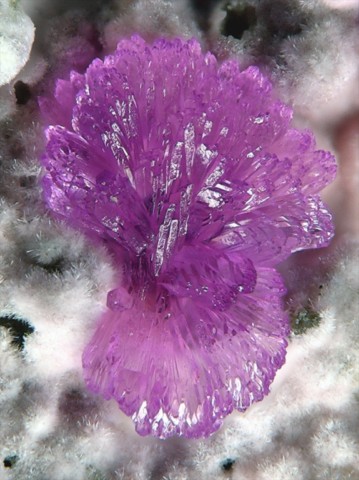SAINFELDITE
Class : Phosphates, arsenates, vanadates
Subclass : Hydrated arsenates
Crystal system : Monoclinic
Chemistry : Ca5(AsO4)2(AsO3OH)2 4H2O
Rarity : Very rare
Sainfeldite was described in 1963 on samples from the famous Gabe-Gottes vein, in the old silver, copper and arsenic mine of Ste-Marie-aux-Mines (Haut-Rhin, France). It is one of the newly formed calcium arsenates from the oxidation zone of arsenic veins; these arsenates crystallize in abundance in old mining workings as a result of the air oxidation of primary arsenic sulfides (arsenopyrite, löllingite). It was named in honor of the geologist and mineralogist Paul Sainfeld, Curator of the Mineralogy Museum of the Ecole des Mines de Paris. Sainfeldite forms millimeter-sized rosettes, consisting of assemblages of transparent crystals in elongated prisms according to [001], often associated with picropharmacolite and native arsenic. It is generally colorless but takes on a beautiful pink color when it contains traces of cobalt. In addition to this color, it is distinguished from other arsenates by its absence of efflorescence.
Main photo : Sainfeldite from Bauhaus, Hesse, Germany © Christian Rewitzer
Sainfeldite in the World
Twinning
No twinning known for this mineral species.
Fakes and treatments
No fakes listed for this mineral species.
Hardness : 4
Density : 3.04
Fracture : Irregular
Streak : White
TP : Translucent to transparent
RI : 1.600 to 1.616
Birefringence : 0.016
Optical character : Biaxial -
Pleochroism : None
Fluorescence : None
Solubility : -
Magnetism : NoneRadioactivity : None





